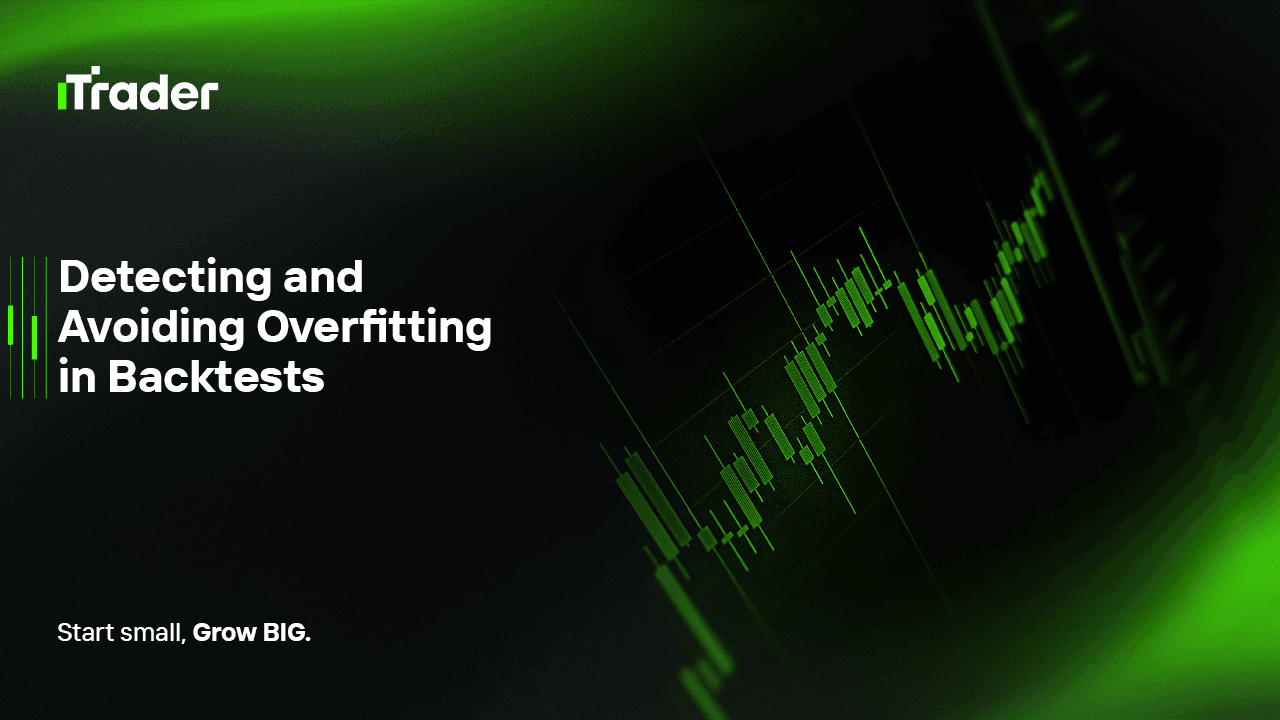2025-09-01
Backtesting is one of the most powerful tools available to traders and system developers. It allows you to evaluate whether your trading idea would have worked in the past, giving a degree of confidence about how it might perform in the future. However, backtesting also carries a hidden danger: overfitting.

Overfitting occurs when a strategy is optimized to perform exceptionally well on historical data but fails when exposed to new market conditions. For prop traders, whose capital allocation and career opportunities depend on proving the robustness of their strategies, avoiding overfitting is not just a technical detail—it is a survival necessity.
This blog will examine the nature of overfitting in backtesting, why it poses serious risks, and how prop traders can systematically protect themselves from this pitfall.
Overfitting happens when a model or trading system becomes overly tuned to past data. In practice, this means your strategy is not capturing genuine market structure but rather random noise.
For example, imagine you design a moving average crossover system and then spend hours adjusting parameters until the equity curve looks perfect. If the rules are too specific—say, a 47-period MA crossing a 113-period MA only under certain market hours—the system might fit past data exceptionally but will likely fail in live markets.
Overfitting gives a false sense of security. The equity curve may look smooth, the drawdowns minimal, and the profit factor high, but all of it is an illusion built on hindsight.
For independent traders, overfitting is already a risk. For prop traders, however, the stakes are much higher:
In short, overfitting is not just a statistical issue. It can destroy a trader’s chance at a career within prop trading.
Recognizing overfitting early can save time and resources. Some warning signs include:
If a backtest seems “too good to be true,” it probably is.
The more parameters your strategy has, the more opportunities for overfitting. Simple strategies with clear logic tend to generalize better. For example, a moving average crossover with one or two filters is less prone to overfitting than a system with ten interdependent conditions.
Always divide your data into in-sample (for model development) and out-of-sample (for validation). A robust system should perform reasonably well on both. If it collapses out-of-sample, it is overfit.
Instead of a single backtest, perform multiple rolling optimizations and validations. This simulates live conditions and shows how the strategy adapts across different market environments.
Every trading rule should have a rationale. For example, trend-following systems should work because of market momentum, not because “it looked good” in historical data. If you cannot explain why a rule works in economic terms, it is probably a curve-fit artifact.
Testing hundreds of indicators and parameter combinations increases the chance of finding a false positive. Limit the number of tests and ensure that results make sense outside of statistics.
Borrowed from machine learning, cross-validation splits data into multiple folds. Each fold is tested separately to see if performance is consistent. This reduces the likelihood of tailoring a model to one specific dataset.
Randomizing the order of trades in backtests helps reveal whether performance depends on a lucky sequence of wins and losses. If results remain stable under randomization, the system is more robust.
By resampling historical returns, bootstrapping allows you to see how sensitive the strategy is to variations in the dataset. Stable results indicate lower overfitting risk.
In algorithmic models, regularization techniques penalize complexity. This prevents the system from placing too much weight on minor historical anomalies.
Overfitting is not just a technical issue; it is also psychological. Traders often fall into these traps:
Being aware of these biases is the first step to avoiding them.
Prop traders can follow a structured workflow to reduce overfitting risk:
Prop firms don’t expect perfection. They expect robustness. This means:
The goal is not to eliminate all losing trades but to show consistent decision-making under varied conditions.
Overfitting in backtesting is one of the biggest threats to prop traders. A strategy that looks flawless on paper can quickly collapse in live trading, leading to wasted time, lost opportunities, and failed evaluations.
The solution is not to abandon backtesting but to use it wisely. By keeping strategies simple, validating them across different datasets, applying robustness tests, and grounding every rule in sound market logic, traders can avoid the trap of overfitting.
For prop traders, the ability to prove that your strategy can withstand real market conditions is the ultimate edge. A robust but imperfect system will always outperform a fragile curve-fitted one in the long run.
© 2025 iTrader Global Limited|会社登録番号:15962
iTrader Global Limitedは、コモロ連合のアンジュアン自治島ムツァムドゥのHamchakoに所在し、コモロ証券委員会によって認可・規制を受けています。ライセンス番号は L15962/ITGL です。
iTrader Global Limitedは「iTrader」の商号で運営しており、外国為替取引業務を行う許可を受けています。会社のロゴ、商標、ウェブサイトはすべて iTrader Global Limited の専有財産です。
iTrader Global Limitedの他の子会社には、iTrader Global Pty Ltd(オーストラリア会社登録番号(ACN):686 857 198)が含まれます。 この会社は、Opheleo Holdings Pty Ltd(オーストラリア金融サービスライセンス(AFSL)番号:000224485)の認可を受けた代表者(AFS代表番号:001315037)です。登録住所は Level 1, 256 Rundle St, Adelaide, SA 5000 です。
免責事項: この法人は、本ウェブサイト上で取引される金融商品の発行者ではなく、それらに対して責任を負いません。
リスク警告: 差金決済取引(CFD)は、レバレッジにより資本の急速な損失リスクが高く、すべての利用者に適しているとは限りません。
ファンド、CFD、その他の高レバレッジ商品を取引するには、専門的な知識が必要です。
調査によると、84.01%のレバレッジ取引者が損失を被っています。取引を開始する前に、リスクを十分に理解し、資金を失う可能性があることを認識してください。
iTraderは、レバレッジ取引によるリスク、損失、またはその他の損害について、個人または法人に対して一切の責任を負わないことを明言します。
利用制限: iTraderは、法律、規制、または政策によりこのような活動が禁止されている国の居住者を対象として、本ウェブサイトやサービスを提供していません。